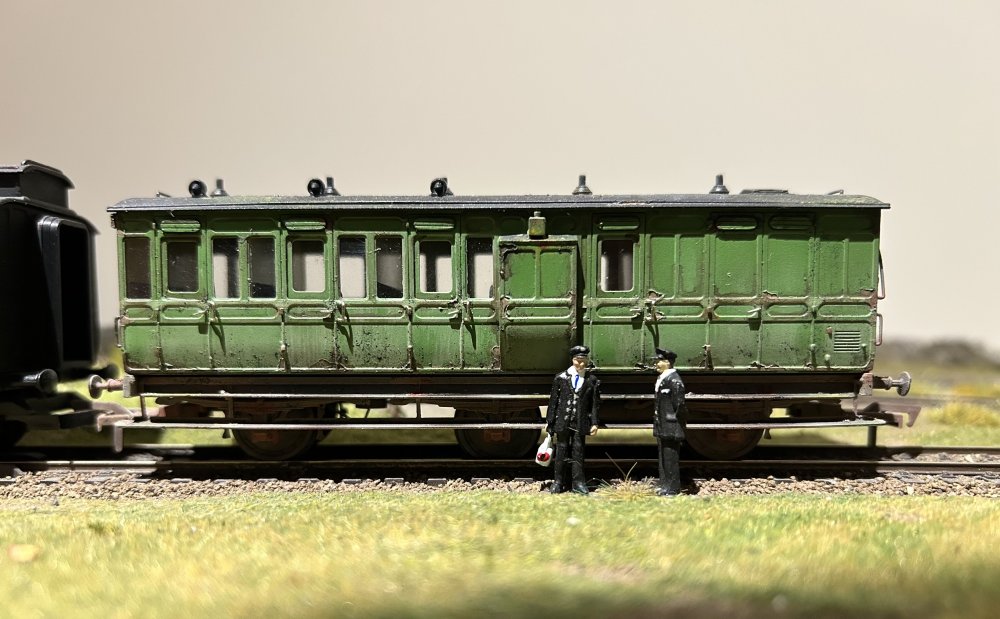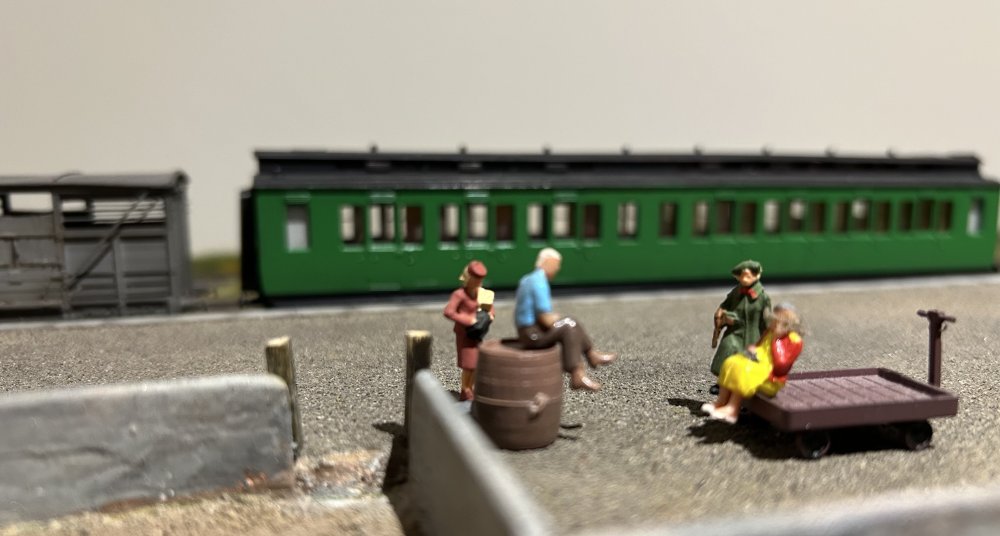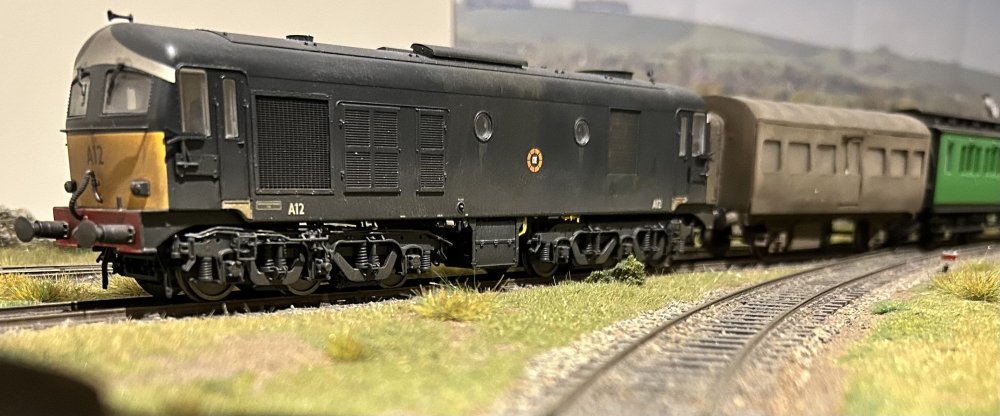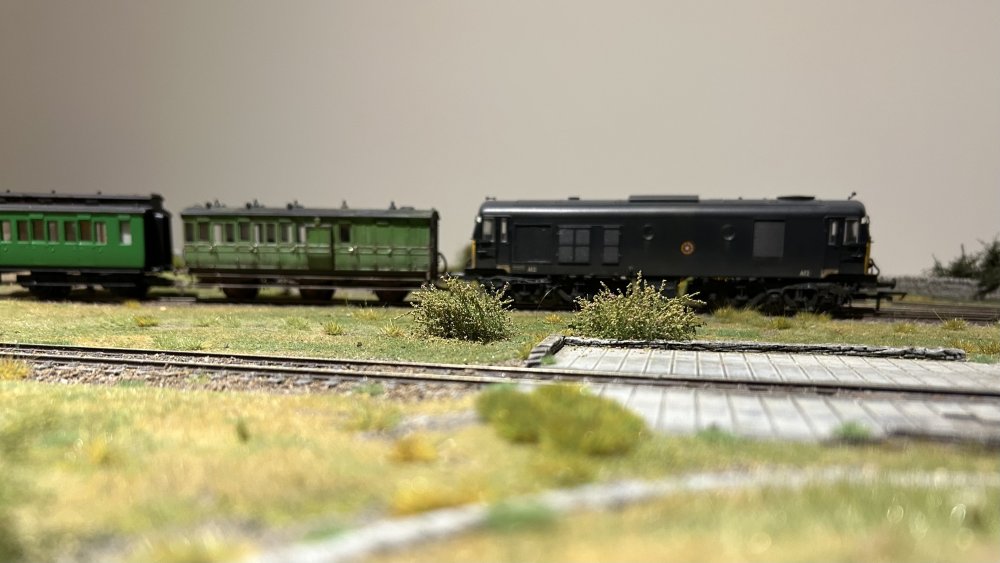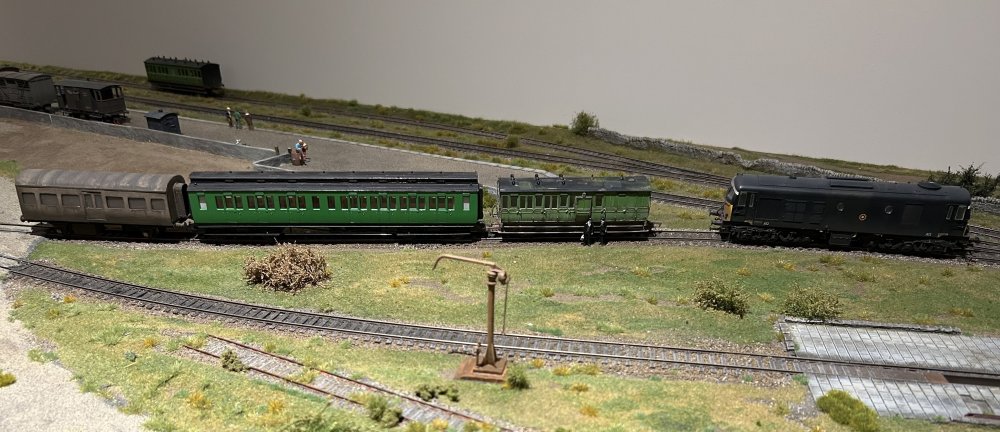-
Posts
15,923 -
Joined
-
Last visited
-
Days Won
394
Content Type
Profiles
Forums
Events
Gallery
Blogs
Community Map
Everything posted by jhb171achill
-
If it’s of any help, livery details for CBPR carriages were - mud grey roofs, black chassis, dark green sides, probably with yellow lining but lining colour not reliably documented anywhere I’m aware of. Ends almost certainly green too. From looking at pigments, I believe the green was probably something like what British Railways had onnsteam engines in the 1950s. Locos were black, with red lining. On takeover by the GSR, the four locos were painted grey pretty quickly, and the carriages painted in full GSR maroon livery. Even many of the station signs were quickly replaced by standard GSR bilingual enamels. On the subject of GSR coach B livery, while the standard was black coach ends, I’ve found quite a few instances of the dnds being maroon as well, often on narrow gauge types. With several Passage coaches having observation ends, I wouldn’t be surprised if all stock on that line was like that.
-
The Eagle Has Landed - NIR Hunslets Next For Accurascale IRM
jhb171achill replied to Warbonnet's topic in News
The NIR publicity pic at the container yard looks very futuristic! -
Now you’re making me drool. SLNCR “B” roaring and labouring its way round the mountainside above Bellacragher Bay, or on the long climb from the Owengarve river bridge up to Mulrany!
-
The big issue, of course, would have been what would have happened when the British companies were nationalised. It might have brought nationalisation here (1950) ahead by two years.
-
Interesting concept. Had the NCC and MGWR been physwically connected, you'd have had one owned by the (English) Midland Railway, and the other by the LNWR, up to 1923, but they would have had become one system after that. This, in turn, would have limited the GSR to little more than the GSR and the narrow gauge lines, and possibly resulted in the subsuming of the CDR into the LMS. But the GNR was in the middle between the, and was itself at one stage contemplating amalgamating with the DSER. Given all that, any supposition as to what might have happened has far too many variables to be anything other than pure fantasy, but certainly an interesting one. The Fishguard company became in operational terms part of the GSR, so a British owned Irish company wholly within the Irish Free State might also have been operated like that. As an aside, it's equally interesting to wonder whyat way our railways would have developed had Ireland never been divided into two separate political jurisdictions....
-
CIE locomotive livery variations 1960-1990
jhb171achill replied to jhb171achill's question in Questions & Answers
Absolutely superb and invaluable piece of work, Mol! -
100% agree
-
Ghastly!
-
Fry built from official drawings where he could get them (usually the Chief Draughtsman’s office in Inchicore). I’m unaware of any he just guessed at, so I’d say this thing had a prototype as shown.
- 45 replies
-
- 2
-

-

-
OBB HOe layout "Connafeld"
jhb171achill replied to Georgeconna's topic in Continental European Modelling
As a big fan of Austrian narrow gauge, I'm watching this one with great interest! -
“Ye put a SHILLING on that thing? Sure it’s as lame as hell! It came second last at Ascot, did ye know that?” ”Listen, Sally’s brother says it’s a guaranteed winner, an’ I only had a shilling - I’d have put a pound on it if I could!” ”Jaysus. Lucky the Grand National’s only once a year. Have you the sandwiches from Bridie?” ”Yes, they’re in the van here. And there’s tea in the two red flasks. But we can’t leave till Gerry comes back with the messages….”
-
“So will you be back to help me with the cows?” ”I’m back on the 8.30 in the morning. Whos buyin’ them?” ”Yer man up in Listowel who comes to the mart” ”Big fella with the red face?” ”Yeah, that’s him. Looks like Jackie’s brother but he’s fatter….”
-
A quiet day at Dugort Harbour in spring 1963. One of the last three passenger-carrying six-wheelers has but one week to go before withdrawal, while the bogie composite will soldier on for another year or so. A12 arrives with the midday connection off the Tralee train. The stock is shunted off the platform line as a ballast train is arriving before the afternoon mixed departs….
-
As it was, with green, it's in the standard GSR & CIE colours. While station "liveries" on most lines did not necessarily bear any relationship to those of their trains, i wouldn't be surprised if the CBSCR used green too - BUT - there's an exception to some rules, and this is one; around 1959/60, several West Cork stations were repainted a new way, along with several on other lines too - RED! So had Ballymartle survived until the end of the Wisht caark system, buy; it may well have ended up red! Up de rebels, boy!
-
I know where he lives, though, Leslie....
-
I wouldn’t. There were only a few shades and like the Southern of England, and pre- and post-1955 CIE coaches, varying shades were due to either an official livery change or weathering. The jury is out on any exact shade in West Cork, but whatever it was, it would have looked quite dark, as photos hint at, due to the copious layers of varnish that any paintwork had over it. I often wonder if their two American tank engines were actually black…. As for Macroom, I think Senior might have told me at one stage that their carriages were originally varnished, but later dark red.
-
Hi folks With (happily) growing interest in pre-GSR times, the following may be of use to some. I’ve included the Midland of England, as the details apply to the NCC system pre-2nd world war.
-
I would remain to be convinced of FFG’s actual commitment to rail. They’ve a long history of making the right noises, but doing nothing.
-
If I had a thing like that and it WAS genuine, I wouldn’t take less than €280, never mind €180. Alternately, if not genuine - and it does look a bit “clean” - then someone’s been robbed!
-
I’d say that will work a whole lot better. Presumably multiple unit operation primarily, or push-pull?
-
I know another individual with a collection like that, which I am aware that it is deteriorating. There’s no talking to him at all!
-
Wow - that’s got to have been a one-off! Would he share his picture?
-
Irish Railway News ‘Enterprise Watch’
jhb171achill replied to IrishTrainScenes's topic in General Chat
No trolley on this 3-car, and none on an NIR 6-car I was on some weeks ago. Gawd be with the days when 4.4.0 No. 207 could be produced with a fine set of wooden GNR carriages, as per my very earliest Enterprise memory (I guess about 1962)… -
Irish Railway News ‘Enterprise Watch’
jhb171achill replied to IrishTrainScenes's topic in General Chat
Yes - you’ve hit the nail on the head. No tea trolley even, on this jam-packed oul crate. Was looking forward to a cooked breakfast!
.png.c363cdf5c3fb7955cd92a55eb6dbbae0.png)


